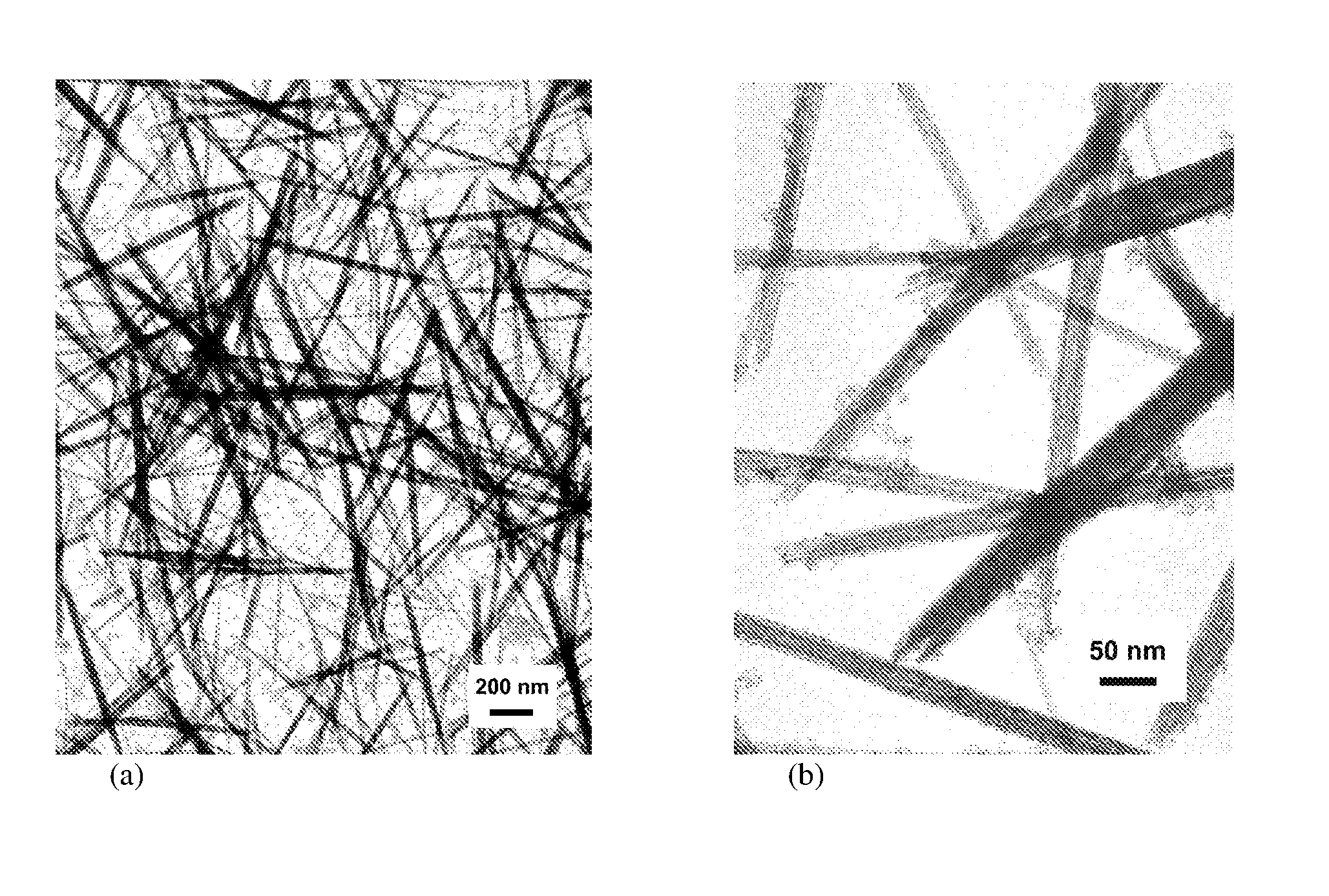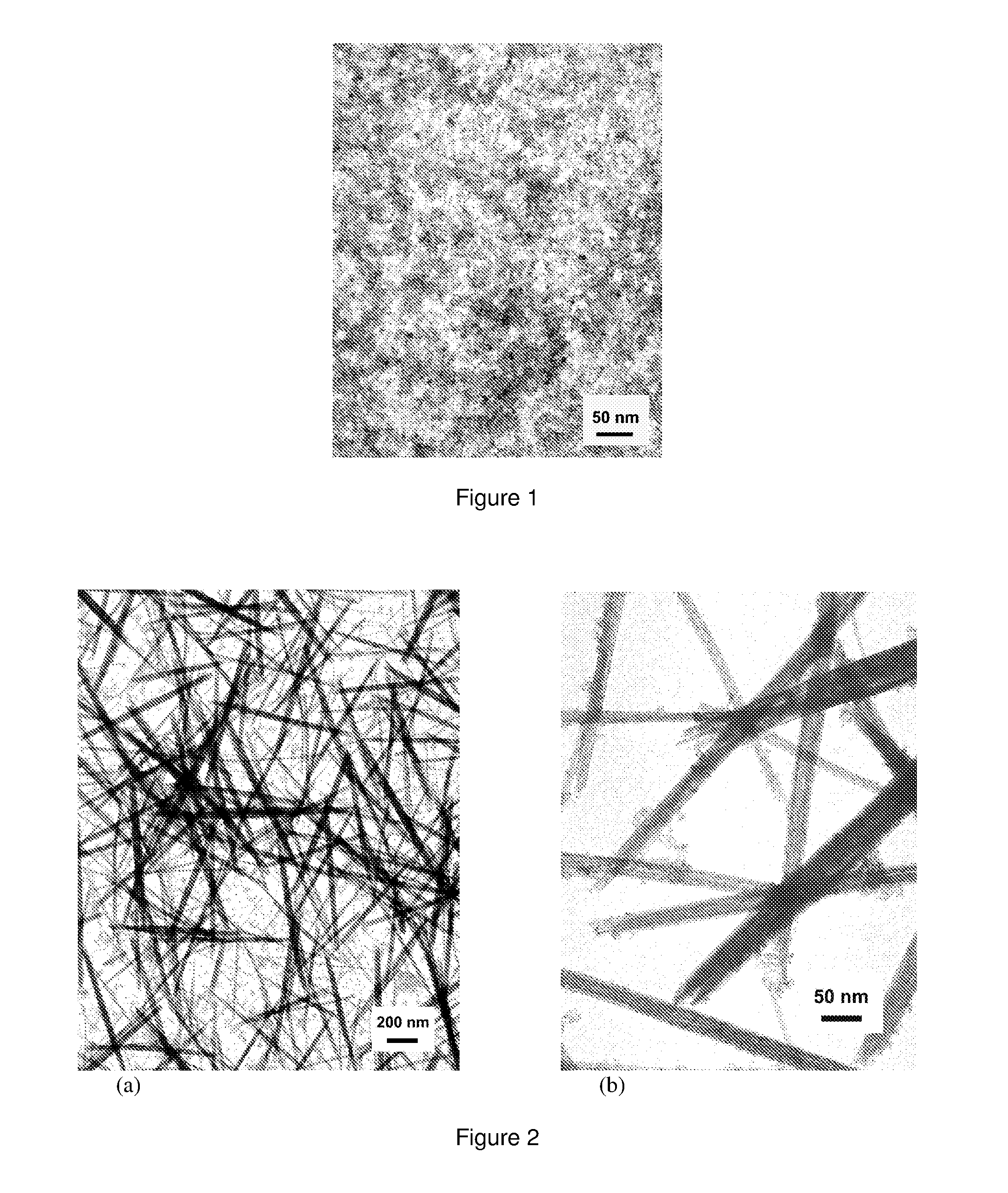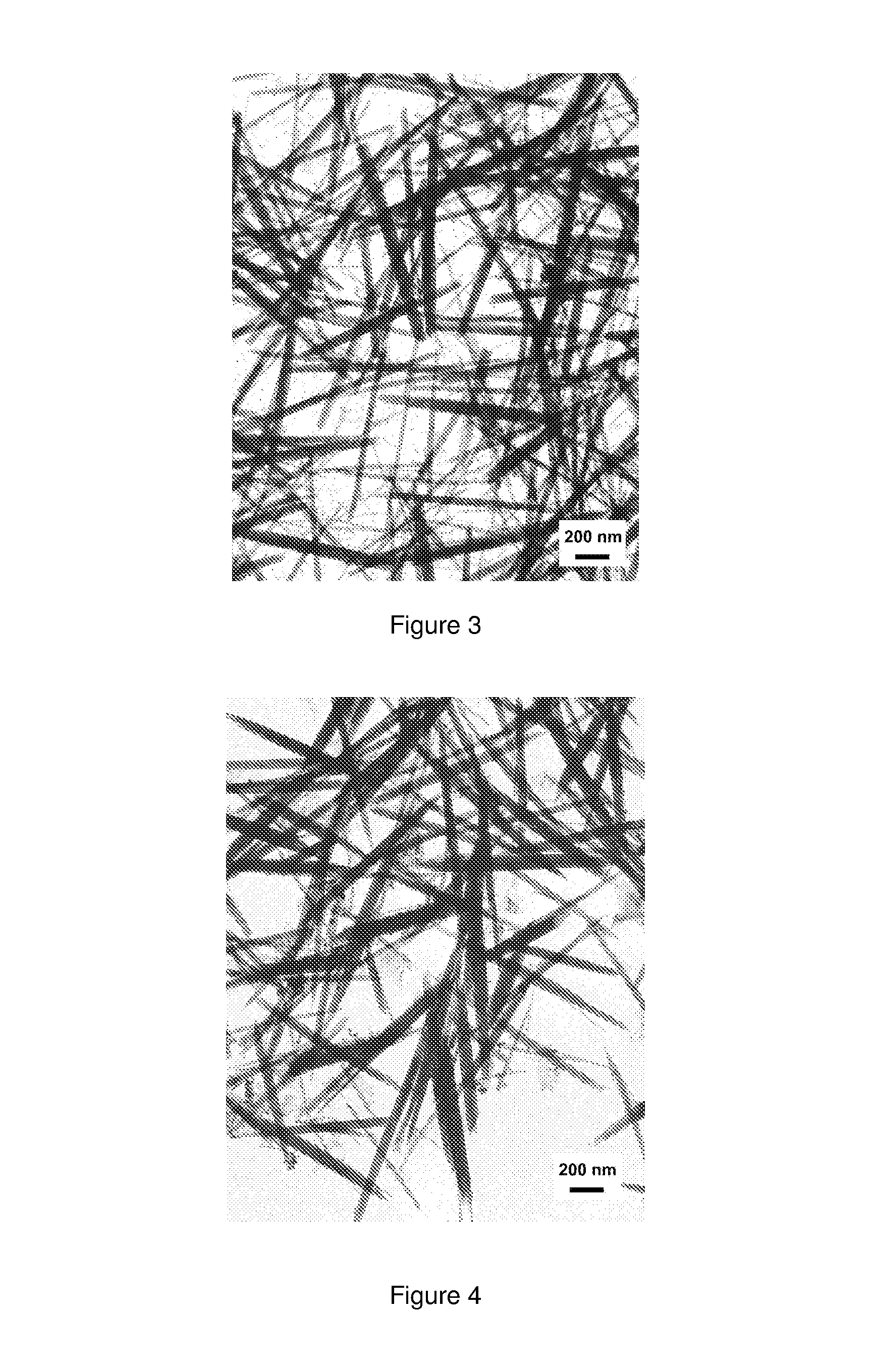Rare earth nanorods
a nanorod and rare earth technology, applied in the direction of lanthanide oxide/hydroxide, cell components, crystal growth process, etc., can solve the problem of expensive starting materials and achieve the effect of significant reducing capital and operating expenditur
- Summary
- Abstract
- Description
- Claims
- Application Information
AI Technical Summary
Benefits of technology
Problems solved by technology
Method used
Image
Examples
example 1
CeCl3 / NH4OH Experiment at ˜pH9.5, 0.04 Mol / Liter
[0054]An aqueous solution of the formula MX3 was formed by dissolving 5.85 g CeCl3.7H20 in 294 g Deionised water. A basic solution made up of 84.6 g NH4OH at 1.1 mol / l was added drop wise whilst stirring, leading to a concentration of 0.04 mol / l Ce(III) ion. A gelatinous precipitate formed which was light purple in colour, characteristic of hydrated Ce(III) oxide formed in the presence of air. The reaction product of the formula MX was NH4Cl. The resulting slurry of the precipitate and the reaction product was stirred for 5 minutes and had a pH of 9.6. The temperature used for this example was ambient (in the order of 20° C.).
[0055]A sample of the resulting slurry was taken after precipitation and prior to ageing and quickly washed by centrifugation using Deionised water, with dilute NH4OH being added where necessary during washing in order maintain a pH of approximately 9.5 throughout. The un-aged sample was repeatedly washed until th...
example 2
CeCl3 / NH4OH Experiment at 0.1 Mol / Liter
[0059]An aqueous solution of the formula MX3 was formed by dissolving 5.85 g CeCl3.7H20 in 70.6 g Deionised water. A basic solution made up of 84.6 g NH4OH at 1.1 mol / l was added drop wise whilst stirring, leading to a concentration of 0.1 mol / l Ce(III) ion. A gelatinous precipitate was observed which was light purple in colour. The reaction product of the formula MX was NH4Cl. The resulting slurry of the precipitate and the reaction product was stirred for 5 minutes and had a pH of 9.6. The temperature used for this example was ambient (in the order of 20° C.).
[0060]A sample was taken after precipitation and prior to ageing and quickly washed by centrifugation using Deionised water, with dilute NH4OH being added where necessary during washing in order maintain a pH of approximately 9.5 throughout. The un-aged sample was repeatedly washed until the conductivity of the wash water measured less than 100 μS / cm (50 ppm salinity equivalent). The rem...
example 3
CeCl3 / NH4OH Experiment at 0.5 Mol / Liter
[0063]An aqueous solution of the formula MX3 was formed by dissolving 27.95 g CeCl3.7H20 in 102.2 g Deionised water. A basic solution made up of 47.76 g NH4OH at 8 mol / l was added drop wise whilst stirring, leading to a concentration of 0.5 mol / l Ce(III) ion. A gelatinous precipitate was observed which was light purple in colour. The reaction product of the formula MX was NH4Cl. The resulting slurry of the precipitate and the reaction product was stirred for 5 minutes and had a pH of 9.6. The temperature used for this example was ambient (in the order of 20° C.).
[0064]A sample of the resulting slurry was taken after precipitation and prior to ageing and quickly washed by centrifugation using Deionised water, with dilute NH4OH being added where necessary during washing in order maintain a pH of approximately 9.5 throughout. The un-aged sample was repeatedly washed until the conductivity of the wash water measured less than 100 μS / cm (50 ppm sali...
PUM
| Property | Measurement | Unit |
|---|---|---|
| temperature | aaaaa | aaaaa |
| temperature | aaaaa | aaaaa |
| temperature | aaaaa | aaaaa |
Abstract
Description
Claims
Application Information
 Login to View More
Login to View More - R&D
- Intellectual Property
- Life Sciences
- Materials
- Tech Scout
- Unparalleled Data Quality
- Higher Quality Content
- 60% Fewer Hallucinations
Browse by: Latest US Patents, China's latest patents, Technical Efficacy Thesaurus, Application Domain, Technology Topic, Popular Technical Reports.
© 2025 PatSnap. All rights reserved.Legal|Privacy policy|Modern Slavery Act Transparency Statement|Sitemap|About US| Contact US: help@patsnap.com



